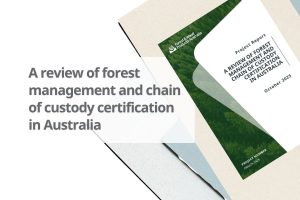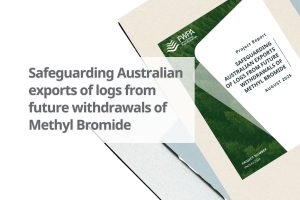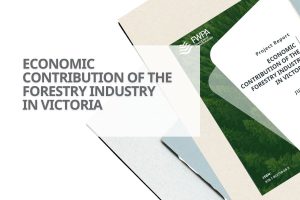Purpose
The project aimed at reducing discolouration in Tasmanian hardwood that limits its market appeal. Production-induced board discolouration, such as stain and sticker mark, occur regularly during appearance hardwood production. Researchers in this project explored how drying and handling processes influence timber colour and consistency.
Summary
This project investigated ways to reduce discolouration in Tasmanian hardwood boards, which limited their market value. Researchers focused on two types of discolouration: “tyre track” in Shining gum and “sticker mark” in Blackwood. They audited production sites, analysed drying conditions, and conducted biological and chemical tests. Tyre track was linked to blue stain fungus and occurred when timber was stored damp during early drying. Sticker marks in Blackwood were more complex, caused by uneven oxidation of chemicals in the wood due to drying conditions. The team found that drying location, board thickness, season, and log age all influenced discolouration rates. The study recommended better drying practices, hygiene, and possibly using natural photo stabilisers to reduce discolouration. The findings aimed to help industry reduce losses, which were estimated at over $1 million annually.
Benefits to the Forest and Wood Products Industry
The key benefits to the industry are:
- It can help reduce timber waste by identifying causes of discolouration in appearance-grade boards.
- It supports higher product value by improving drying and storage practices.
- It helped the industry avoid financial losses estimated at over $1 million per year.
Acknowledgement
This work was supported by funding provided to Forest and Wood Products Australia (FWPA) to administer the National Institute for Forest Products Innovation program (NIFPI).
Funding for the program was provided by the Australian Government, the Tasmanian Government and Australian forest and wood products industry.



